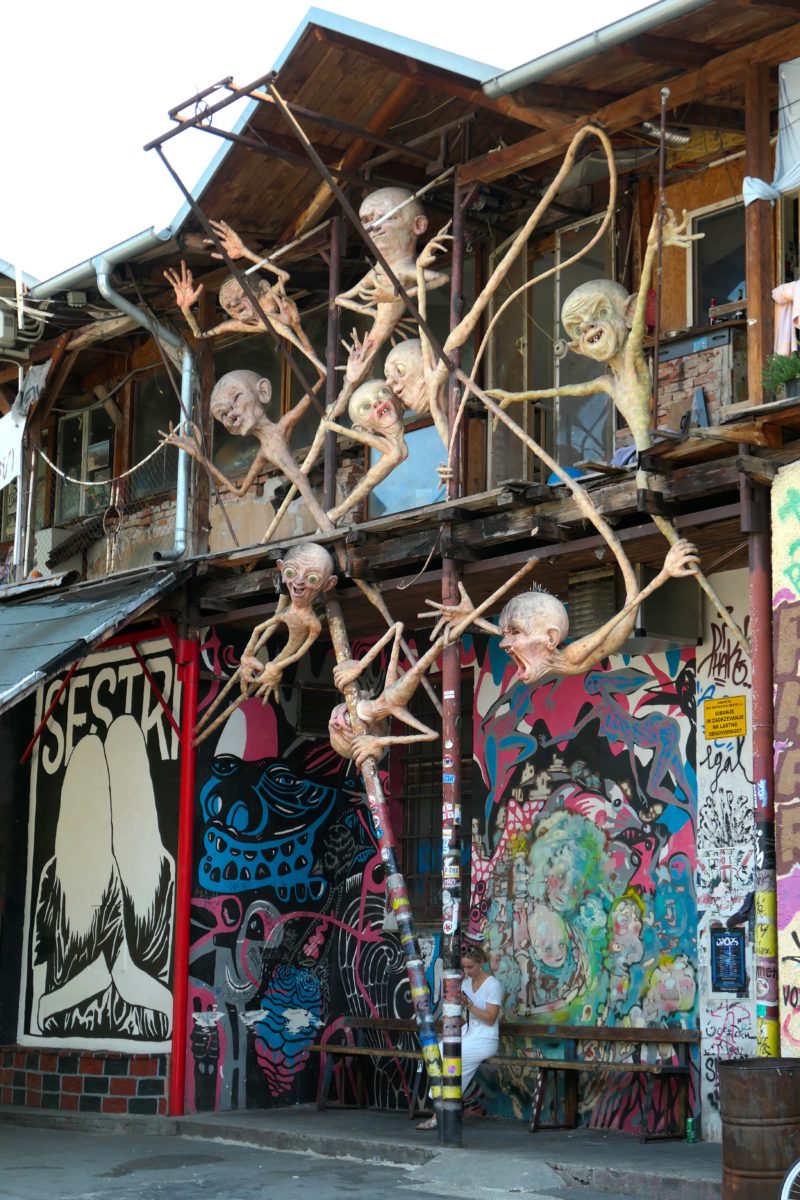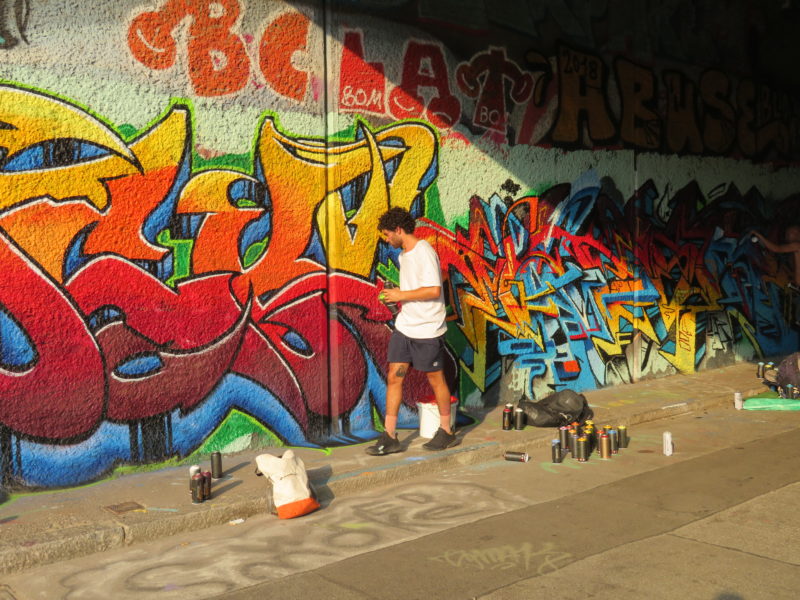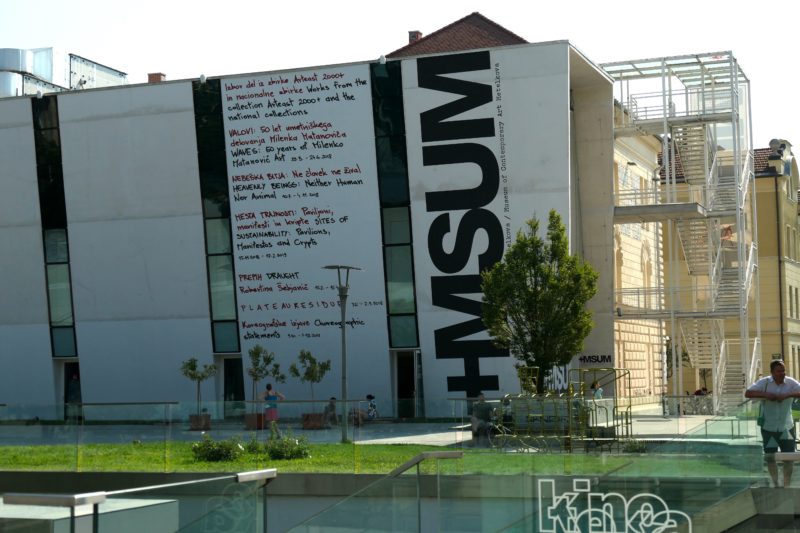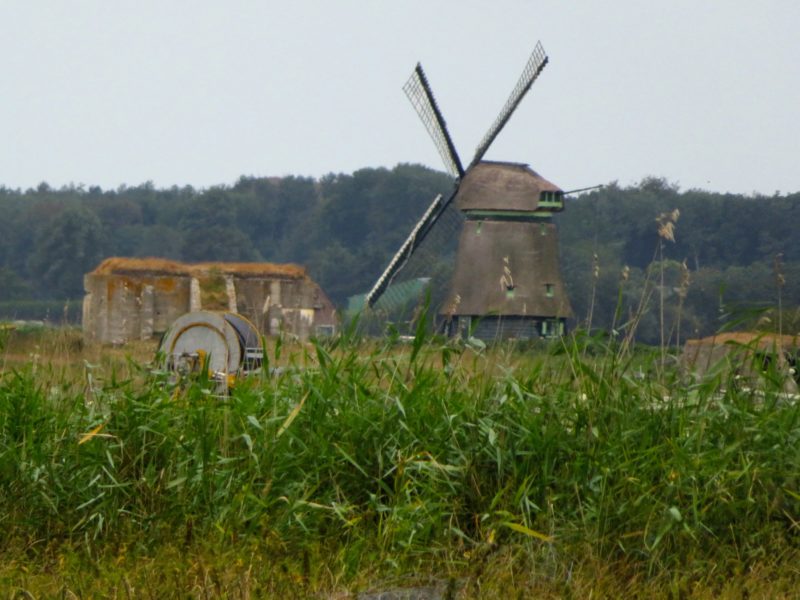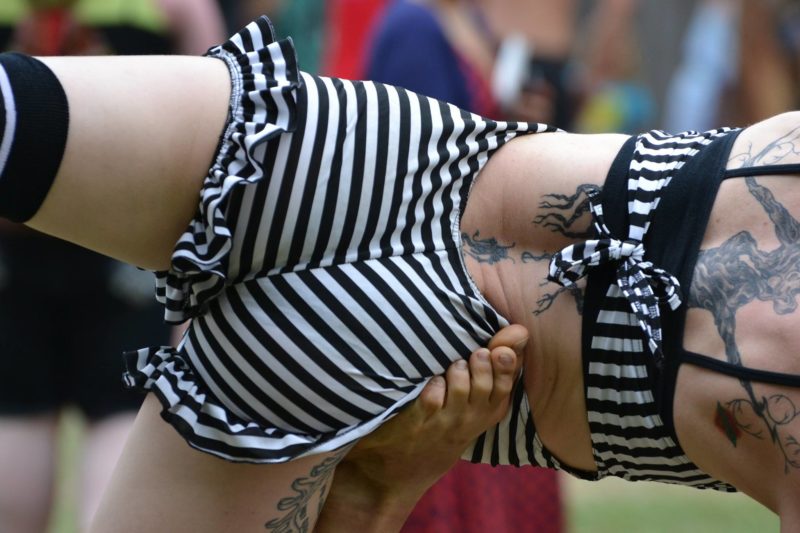
No more pink ribbons
It was today a long time ago that I took the first step to rid my body of cancer. Between the knives on 6/27 and the subsequent poison(s) for many years, it all worked out. The physical remnants are manageable, the psychological ones something you live with, as people do with any other chronic disease. For now, I and so many others I know, are prime examples of the miracles of modern medicine. Grateful, if wary.

Chemo-Brain Freeze
Shortly after treatment I spent some time photographing myself in all kinds of Portland windows that contained some elements I associated with the experience, and wrote short bits about it, getting it out of my head onto a page. Emerging from Departure Mode was a small-scale attempt to package a long and frightening process into something that signaled creativity over despondence. My first venture into photography, too, long before I started montage work.

Radiation Target
This week a friend sent me the article below about Prune Nourry and her own approach to control the inevitable process of getting your life back after a threatening crisis. Her’s is large-scale pay-back to an adversary that should bite the dust just looking at the sheer force emanating from her sculpture. A catharsis sculpture, indeed.

Waves of Grief
I have reported on Nourry before here: https://www.heuermontage.com/?p=6793
I will leave it to the article below, to describe her new work in detail, a sculpture modeled on classic Amazon depictions, and then studded with a twist……
Do open the link to see the photographs of her work – the power of it will rub off on all of us!
https://www.nytimes.com/2018/06/24/arts/design/prune-nourry-amazon-metropolitan-museum-of-art-sculpture.html
June 24, 2018
Prune Nourry working on her sculpture “The Amazon” at the Brooklyn Navy Yard. She created it in response to her treatment for breast cancer.Nathan Bajar for The New York Times
For the last two years or so, the artist Prune Nourry has thought of herself as a sculpture. Ms. Nourry, who is French and splits her time between Brooklyn and Paris, was diagnosed with breast cancer in 2016. As she went through treatment, including chemotherapy and reconstructive surgery, she thought of her doctors as the sculptors and herself as the material they were fashioning. Now, Ms. Nourry, 33, has created her own work in response to that experience, as a tribute to breast cancer survivors everywhere.
“The Amazon” is a 13-foot-tall cement sculpture of a female warrior, with bared breasts, her torso and head pierced by thousands of joss sticks, jutting out like arrow shafts. It was modeled after the life-size marble statue of a wounded Amazon at the Metropolitan Museum of Art. Ms. Nourry’s version weighs nearly two tons, and has lifelike hazel-brown eyes, crafted from handblown glass. It made a public debut last week, in a plaza outside the Standard Hotel in Manhattan’s meatpacking district, where it will be on view into July. (The hotel owns the space and offers it to artists; the painter José Parla and the pop artist KAWS have exhibited there before.) In a private performance, Ms. Nourry will eventually chisel away one of the Amazon’s breasts.
Thirteen feel tall, the sculpture weighs nearly two tons and has lifelike hazel-brown eyes, crafted from handblown glass.Nathan Bajar for The New York Times
“It’s really, for me, a catharsis sculpture,” she said, in a recent interview at a studio in the Brooklyn Navy Yard, where she and a few helpers created the work. She added that the artwork, and the medical process that led to it, also re-contextualized all her projects that came before, among them “Terracotta Daughters,” a riff on the famous sculpted Chinese army from the 3rd century B.C. In Ms. Nourry’s 2012 version, her 108 clay soldiers are girls, based on real-life orphans, as a commentary on the gender imbalance in China’s culture, where boys are traditionally more prized. It has been exhibited in North America, Europe and China.
Ms. Nourry, a multimedia artist who often works in sculpture and performance, frequently deals with gender, reproduction and bioethics; an early piece, “The Spermbar,” repurposed a New York food cart, and allowed visitors to create a beverage by choosing the traits they would want in a sperm donor, questioning the pre-selection of human embryos. In The New York Times, the critic Gia Kourlas called it “a witty, disturbing project.”
This life-size marble statue of a wounded Amazon at the Metropolitan Museum of Art served as a model for Ms. Nourry’s work.The Metropolitan Museum of Art, New York
Ms. Nourry had planned to remove one of her Amazon’s breasts in public, but at the last moment decided that was best done in a more intimate setting. She also wanted to extend the timeline of the project, because “healing is a long process too,” she said. So when her sculpture first went on display, she focused on another performance that connected both her earlier work and her life as a patient: She covered her statue with about 6,000 red Chinese incense sticks, symbolic of the acupuncture treatment she underwent as part of her medical care. (Her series “Imbalance,” which she prepared and exhibited while undergoing chemo, also uses acupuncture needles.)
Ms. Nourry, who is now in remission, managed to keep up her exhibition schedule, which included a show at Musée National des Arts Asiatiques in Paris, through her hospital stays. “I felt lucky that I had all the work that I was passionate about,” she said. “I didn’t want to stop. But also the fact of being able to create something out of it is helpful, too.”
Ms. Nourry covered her statue with about 6,000 red Chinese incense sticks, symbolic of the acupuncture treatment she underwent as part of her medical care.Nathan Bajar for The New York Times
On the summer solstice, June 21, as the sky flicked from hot pink to lavender to dusk, a small, fashionable crowd surrounded the Amazon. Among them were boldfaced names, friends of Ms. Nourry and her husband, the artist JR, including Jennifer Lawrence, Grace Hightower De Niro, the director David O. Russell and the graphic novelist Art Spiegelman. Jon Batiste, the musician and bandleader for “The Late Show With Stephen Colbert,” began the event by improvising on a melodica.
As he sat down to play keys, Ms. Nourry’s assistants, clad in medical white, joined the artist, who was in a lab coat. Slowly, methodically, they lit the incense; soon the sturdy warrior, with her sheath of protective quills, had a halo of wispy, fragrant smoke. Ash began to cover the ground as Mr. Batiste played his closing song, requested by Ms. Nourry, called “Don’t Stop.” “It’s a very uplifting song, but it’s also a song about death and mortality,” he said.
Ms. Nourry and her assistants lit the incense on the summer solstice; soon the sturdy warrior had a halo of wispy, fragrant smoke.Nathan Bajar for The New York Times
“She really knows how to tap into the human experience in the most immediate way,” Mr. Batiste added of Ms. Nourry, a longtime friend and, more recently, a collaborator on projects that unite his music and her visuals. “It’s like a musician who knows how to play one note to make you cry,” he said. “And you can’t explain why. It’s just when you look at the sculpture, you feel something, whoever you are.”
The story of Amazon women — that they were a tribe of powerful and skilled fighters who, it was sometimes said, cut off their right breasts to better their archery — remains mostly the domain of Greek myth, although some research by Jeannine Davis-Kimball, an archaeologist from the University of California, Berkeley, found evidence of a class of warrior women in the Eurasian steppe. Ms. Nourry did not delve deeply into what was fact or legend. “I like this gray area,” she said.
As the incense on her sculpture burned, it left in its place seeping red dots. “It looks like she is bleeding,” Ms. Nourry said, contentedly. Passers-by snapped photos from atop the Highline. The sculpture will remain on view for several weeks, at least, and will later be sold, with some proceeds going to cancer charities.
“The sculpture is not especially for me only,” Ms. Nourry said. It was meant to honor all sorts of female warriors, she said. She will replace the incense, but, she added, “I would love if women can come and light their own, as a symbolic gesture for themselves.”
The sculpture made its public debut last week, in a plaza outside the Standard Hotel in Manhattan’s meatpacking district, where it will be on view into July.Nathan Bajar for The New York Times

Here’s to healing.



















